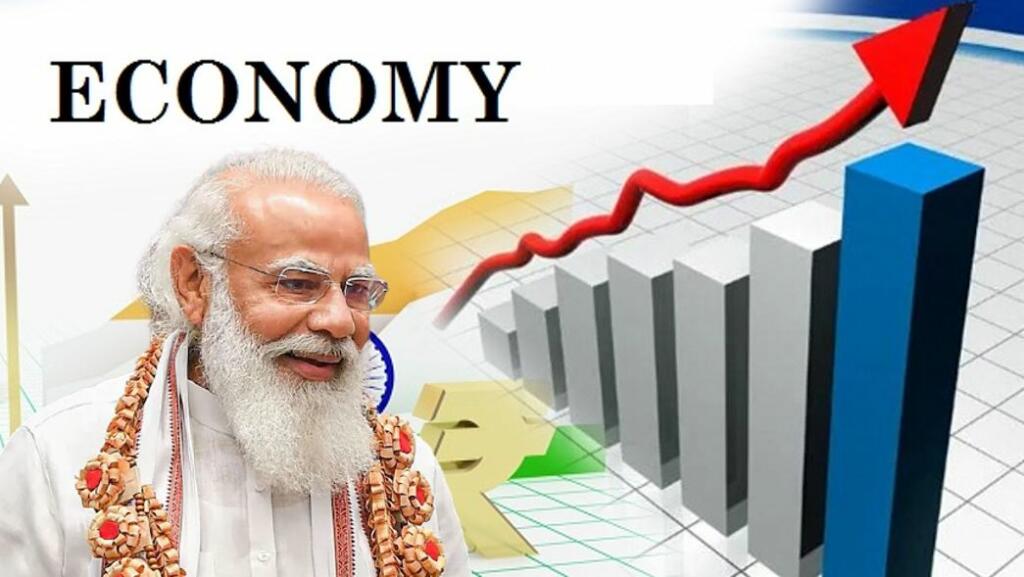India’s economy has recovered from its pandemic-induced slowdown. In the first quarter of the financial year 2021-22, India’s GDP grew at a brisk 20.1% – its best growth numbers till date. Now, if US brokerage firm Jefferies is to be believed, India’s economic growth is bound to stay high in the years ahead. This is a strong vindication of Modinomics, which is powering high growth rates in India.
Jefferies shows optimism about Indian economy:
As per Jefferies, India is likely to clock high growth rates similar to the ones recorded from 2003 to 2010, when Vajpayee-era policies and structural reforms had led to corporate profitability, home sales and lower bad assets. India’s GDP clocked growth of 8.5%-9% between 2003-2010, which was a significant rise from 5.5%-6% in the years before that.
The US brokerage said, “Between 1997 and 2004, bank gross NPA ratio moved down from 16% to 8%. Similarly, the Indian banking system’s gross NPA has moved down from 12% in March 2018 to 7% now and alongside a provisioning jump, the net NPAs are down 59%”.
It added, “Provision costs are off drastically. While banks are still risk-averse, we believe that the stage is now set for an increase in risk appetite. Strong capability and seven-year high RoEs further support lending growth,”.
Jefferies concluded, “Corporate investment is still sluggish as capacity utilisation and risk appetite is low. Property uptick should help reduce risk averseness. Overall, the broader capex upturn should follow over the next 4-6 quarters.”.
Modinomics has successfully revived the Indian economy:
The Jefferies’ outlook regarding the shining Indian economy is a proof of just how successful Modi government’s economic policies have been. Modi government came to power at a time when India was looking at slower economic growth rates. There was this issue of policy paralysis at the central level, and in financial year 2012-13, the GDP growth rate declined to 4.5 percent.
After coming to power, Modi government made some structural reforms like Jan Dhan Yojana and demonetisation, which increased the formal character of the Indian economy. In the initial years, Modi government managed to ensure really high growth rates. In the financial year 2015-16, growth rate stood at 8.2 per cent.
Also read: Modinomics Vs Manmohanomics – Meritocracy Vs Mediocracy
However, after 2016, Modi government focused on structural reforms like introduction of the Goods & Services (GST). The reforms held back growth rates for a few years and global issues like deteriorating trade ties between big powers, as well as the COVID-19 Pandemic led to slower growth over the past one or two years. Yet, the structural reforms made by Modi government have strengthened the fundamentals of the economy, which is bound to propel better growth in the upcoming years.
Later, Modi government also introduced other reforms like the Insolvency & Bankruptcy Code (IBC) as well as the Real Estate (Regulation and Development) Act 2016, which have tackled the non-performing assets (NPA) problem of the Indian banks and reposed faith in the Indian property market respectively.
Moreover, the social welfare programmes of the Modi government like approving proposals for construction of 3.61 lakh houses under Pradhan Mantri Awas Yojana – Urban (PMAY-U), are also powering higher growth rates. Modi government’s stress on affordable housing is commendable, and as per Jefferies, construction of houses leads to huge job creation and has multiple linkages fuelling an economic upturn.
Christopher Wood, global head of equity strategy at Jefferies, bullish on Indian securities:
India’s stock markets have been performing brilliantly for over a year now. This is why research & brokerage houses such as UBS, HSBC, Nomura and Morgan Stanley have downgraded Indian securities, citing their rich valuation.
Also read: Morgan Stanley CEO shows faith in Modinomics
However, Christopher Wood, global head of equity strategy at Jefferies, remains bullish. Since Jefferies believes that India’s growth story has just started, Wood says he would like to buy Indian stocks on every decline. Wood said, “Any sell-off in Indian equities triggered by tapering / tightening scare on Wall Street will provide opportunities to add to Indian equities, most particularly if this coincides with a further likely rise in the oil price on an accelerating re-opening of the global economy.”.
India’s economy is thus only looking at higher growth and optimism from here on, and the complete credit for its upward trajectory should go to Modinomics.
